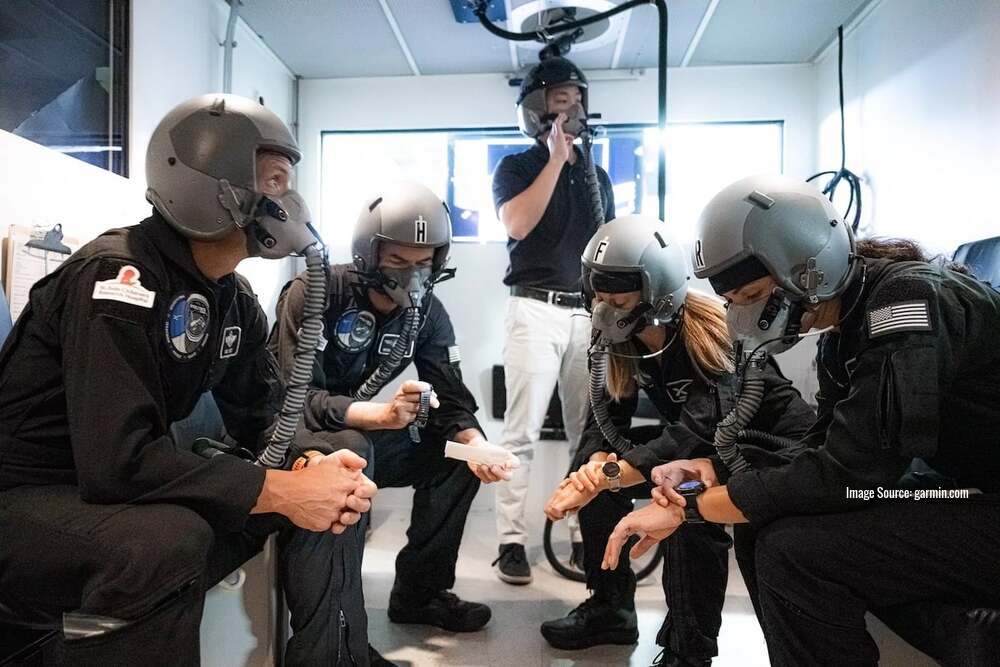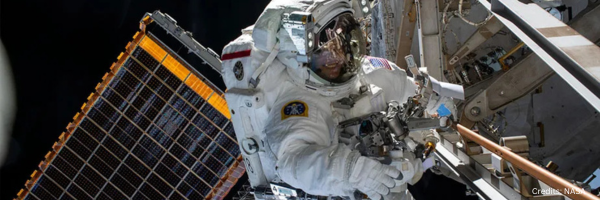How Personal Health Devices and Wearables are Advancing Space Health Research

In September 2024, the Polaris Dawn mission took a major step in space health research, conducting the first-ever commercial spacewalk while testing new health monitoring technologies. As human spaceflight pushes toward longer missions and aims for Mars, ensuring astronaut health becomes increasingly critical.
Space travel poses unique physiological challenges, from cardiovascular strain to vision impairment. Monitoring astronaut health in real time is crucial, and wearable devices play a pivotal role in space health research by continuously tracking vital signs, activity levels, and environmental factors.
Recognizing the importance of real-time health tracking, TrialX was selected by the Translational Research Institute for Space Health (TRISH) in 2021 to build the EXPAND database – a first-of-its-kind database designed to collect research, flight, and relevant clinical data from future commercial spaceflight missions. Leveraging our extensive experience in building clinical trial solutions, we quickly customized our existing platform to meet the unique needs of the EXPAND program. The database supports a variety of data types across multiple research studies and currently houses data from six space missions. It equips space researchers to reuse and integrate research data, unlocking innovative insights into astronaut health.
Our Remote Data Collection Platform is the backbone of the EXPAND App, providing a robust and secure system for real-time health monitoring, data management, and genomic analysis. The platform seamlessly integrates with various wearable devices, ensuring top-tier security and large-scale data handling. In the following section, we explore the wearable devices used in recent space missions that we supported.
Wearables Devices Used in Space Missions Supported by TrialX
TrialX has supported six space missions—Inspiration 4, MS-20, Axiom-1, Axiom-2, Axiom-3, and Polaris Dawn—by integrating advanced wearable sensors to monitor astronaut health during pre-flight, in-flight, and post-flight phases. Key wearable devices used include:
1. Garmin Smartwatches
- Used to monitor heart rate, SpO₂ (oxygen saturation), sleep patterns, and overall activity.
- Helps track astronauts’ cardiovascular health and fitness levels in space.
- Models like Garmin Fenix 6, Garmin Forerunner 945, and Garmin MARQ were used.
- In Polaris Dawn, astronauts used the Garmin Fenix 7 to measure physiological responses to spaceflight.
2. BioButton by BioIntelliSense Inc.
- A single-electrode sensor that continuously tracks temperature, respiratory rate, heart rate variability, and posture.
- Provides real-time monitoring, crucial for understanding long-duration spaceflight effects on astronaut health.
3. Smart Contact Lenses
- Embedded with micro-sensors to measure intraocular pressure (IOP), aiding in vision health assessment.
- Crucial for detecting Spaceflight-Associated Neuro-Ocular Syndrome (SANS), a condition caused by fluid shifts in microgravity.
- Mojo Lens and Sensimed Triggerfish are examples of such technology.
4. 3D Ultrasound Devices
- Used to create 3D images of ocular structures and assess fluid shifts in microgravity.
- Butterfly iQ+ portable ultrasound was utilized for in-orbit scans of astronaut eyes.
5. Dexcom G6 Continuous Glucose Monitor (CGM)
- Tracks glucose levels in real-time, offering insights into metabolic changes during spaceflight.
- Provides a non-invasive way to study astronauts’ glucose metabolism and adjust dietary/nutritional plans.
- Used in Polaris Dawn to monitor astronaut health.
Simulating Space: The TREK-I Analog Mission
To prepare for long-duration space missions, researchers often conduct analog missions—simulated space-like environments that help test equipment, human physiology, and behavioral responses in extreme conditions. In August 2024, TrialX led the TREK-I Mission, a high-altitude analog study designed to examine how the human body adapts to reduced oxygen levels and environmental stressors at high altitudes.
Our team trekked to an alpine lake in the Northern Himalayas (Gangbal Lake), which is at an elevation of 3,575m, while wearing advanced biosensors and wearable devices to monitor physiological and cognitive changes in real time. This mission allowed us to test the effectiveness of these technologies in conditions that mimic challenges astronauts face in space.
Wearables Tested on TREK-I:
- Garmin Watches – Tracked heart rate, SpO₂ (oxygen saturation), and physical activity throughout the trek.
- Samsung Watches – Captured environmental and biometric data to analyze how external conditions affect human physiology.
- Atmotube Sensors – Monitored air quality and atmospheric changes, simulating the need for precise environmental monitoring in space.
- PineTime Watches – An open-source smartwatch used for real-time health tracking during the mission.
- Android Watches – Provided additional biometric insights to enhance physiological data collection.
By testing these devices in extreme environments, we validated their capabilities for future space missions, ensuring that wearable health technology continues to play a crucial role in astronaut safety and performance.
Other Popular Wearable Devices used in Space Health Research
Here are several other innovative wearable health technologies that have been used in space research:
1. Hexoskin Smart Shirts
- Monitors heart rate, respiration, and movement.
- Provides continuous biometric data without the need for bulky devices.
2. Oura Ring
- Tracks sleep cycles, heart rate variability, and temperature changes.
- Used in spaceflight studies to analyze astronaut stress and recovery.
3. Polar H10 Heart Rate Monitor
- Highly accurate chest strap sensor used to measure cardiovascular strain.
- Commonly deployed in space analog missions for precise heart rate tracking.
4. Empatica E4 Wristband
- Tracks electrodermal activity (EDA), heart rate, and temperature.
- Used in space health studies to assess stress responses and autonomic nervous system activity.
The Future of Wearable Technology in Space Health
With NASA’s upcoming Artemis missions to the Moon and future crewed expeditions to Mars, wearable health technologies will play an even greater role in astronaut safety. Advanced biosensors, AI-powered analytics, and machine learning algorithms will enable real-time anomaly detection and predictive health diagnostics, helping astronauts proactively manage health risks in deep space.
NASA has already been exploring wearable technologies for space health, including smart suits and biometric monitoring systems. As missions extend beyond low Earth orbit, the need for continuous health monitoring and AI-driven insights will become even more critical.
Key Benefits of Wearables in Space Exploration:
- Continuous astronaut health monitoring – Reduces dependency on large medical equipment.
- Early disease detection – AI-based analytics can predict early signs of medical conditions.
- Increased astronaut safety – Helps mitigate risks associated with microgravity and deep-space travel.
- Large-scale space medicine research – Expands data collection on human adaptation to spaceflight.
Looking Ahead
Wearable devices are transforming space health research, enabling real-time astronaut monitoring and data-driven clinical research. TrialX is at the forefront of integrating next-gen biosensors and digital health tools into space and terrestrial missions. As space travel evolves, wearable health technology will be vital for ensuring astronaut safety and optimizing long-term human space exploration.Interested in how TrialX is shaping the future of space health research? Visit trialx.com/xpand

